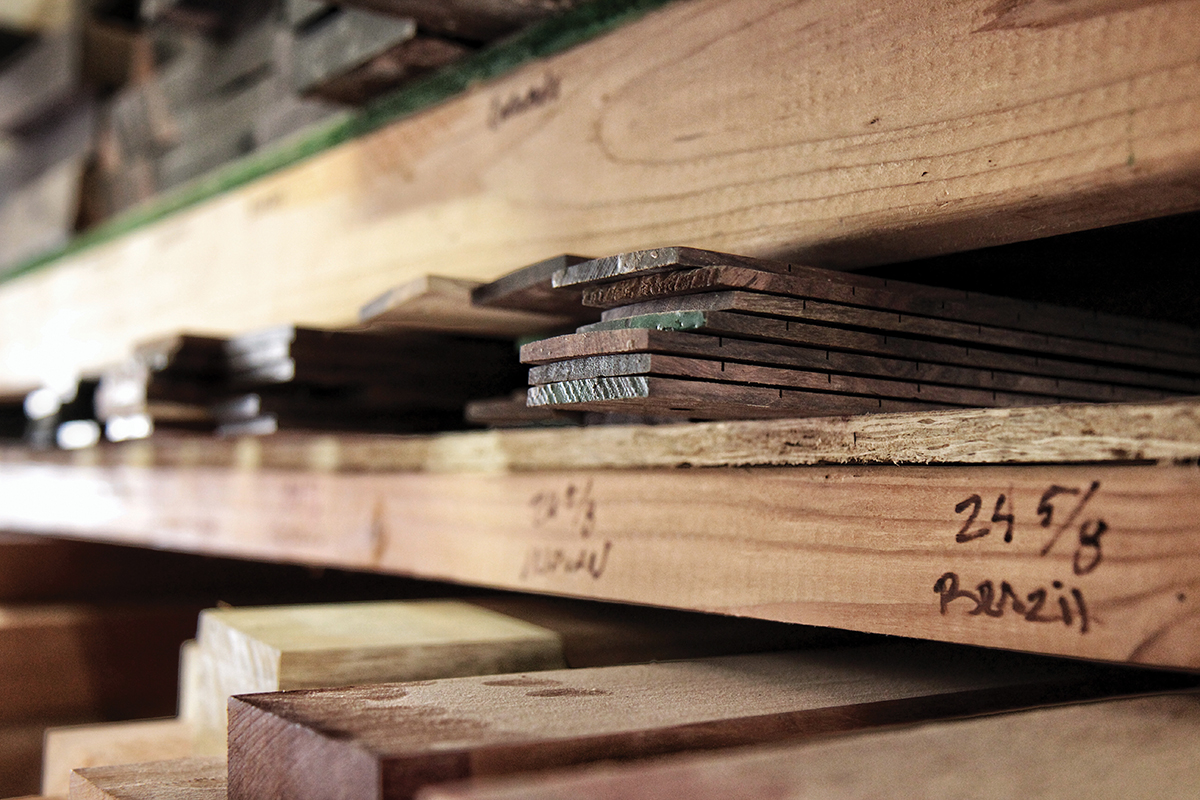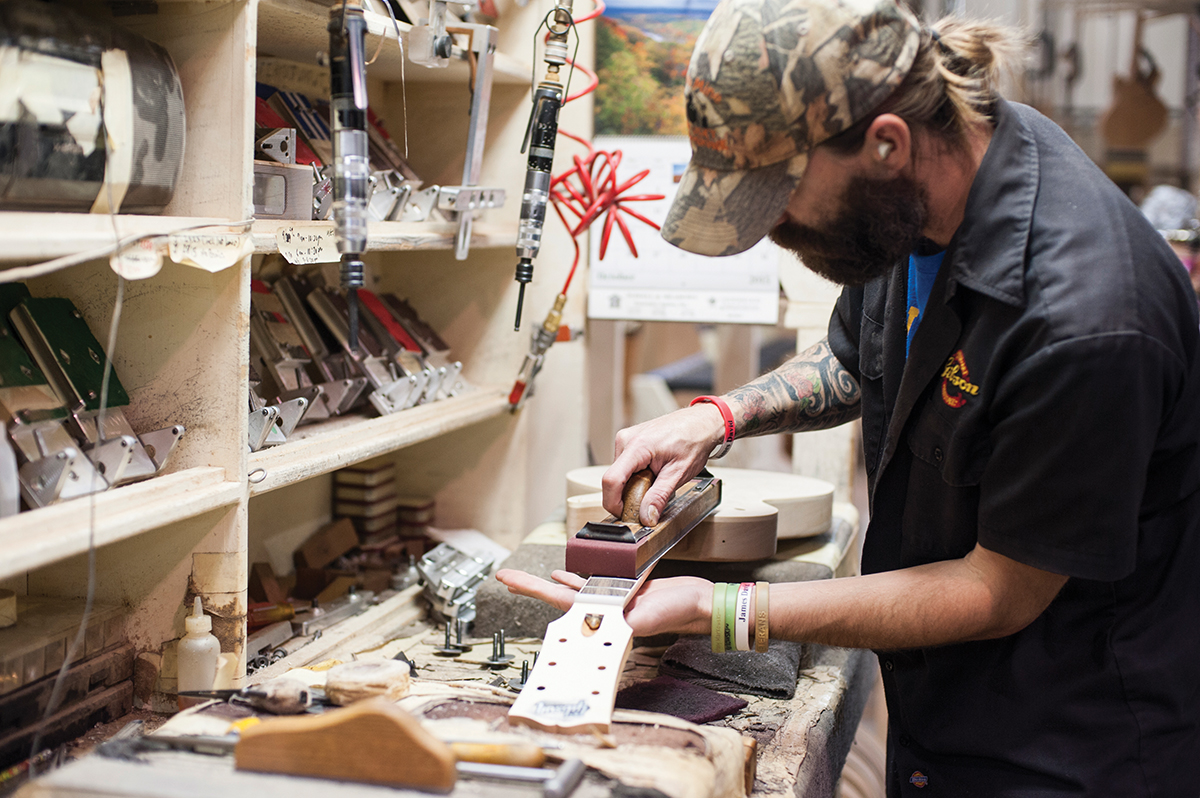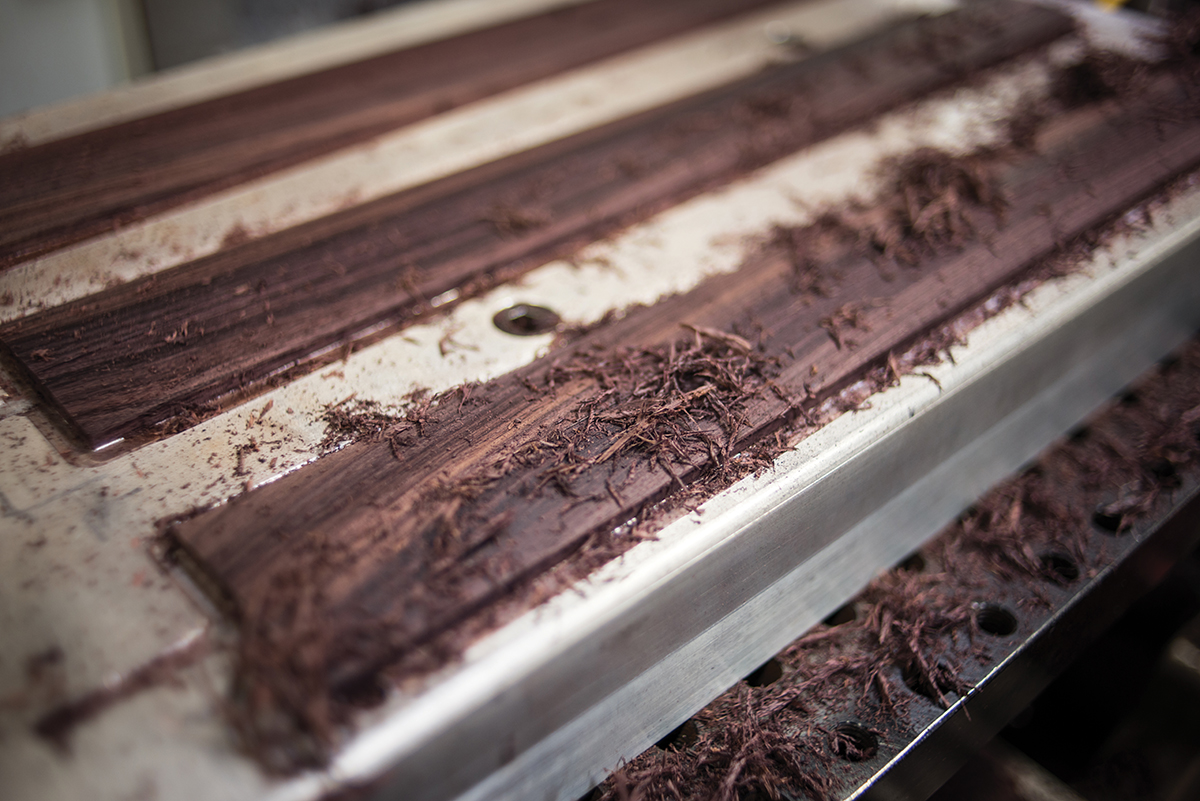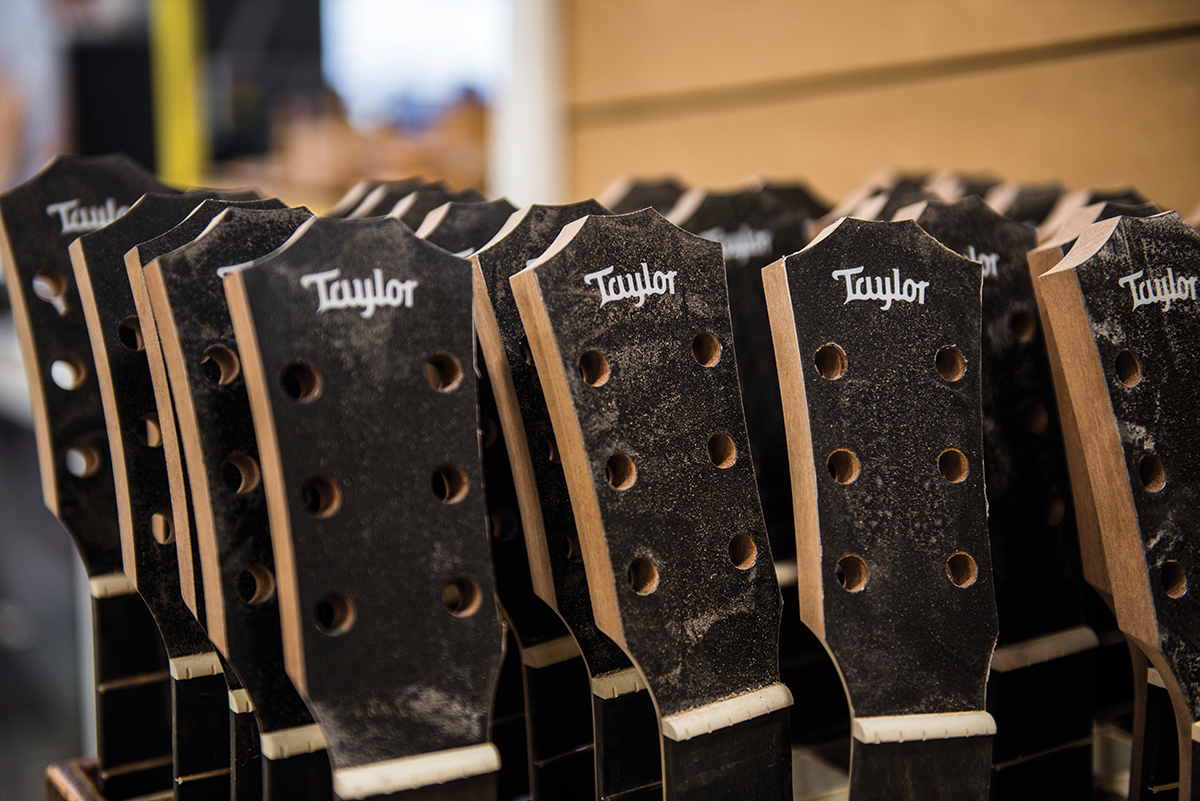Related Tags
The War Of The Rosewood
Some have speculated that recent CITES changes may spell the end for rosewood in the manufacture of affordable guitars. We help you see the wood for the trees.

Beloved for its use in the fingerboards of all types of guitars; the sides, backs and bridges of acoustics; and several decorative elements, rosewood has long been one of the most revered woods in all of instrument making. But the trade in this prized tonewood just got a lot more restrictive.
To find out what this means to many of the largest American guitar makers in particular, and to the overseas customers who buy their instruments, let’s unravel some of the fine print within these new international rules.
Most guitarists who dabble in either vintage or ‘boutique’ electric and acoustic guitars have long been aware of existing restrictions on the trade in Brazilian rosewood (Dalbergia nigra), and their implications on efforts to import or export instruments containing that prized species of tonewood.
In the most recent meeting of the parties to the Convention on International Trade in Endangered Species of Wild Fauna and Flora (CITES) in September and October 2016, however, this group overseeing worldwide protection of endangered plants and animals agreed to place all species of rosewood (both the genus Dalbergia and Pterocarpus erinaceus, the latter also called ‘African rosewood’), as well as three species of bubinga, under Appendix II protections as of 2 January 2017 (Brazilian rosewood has long been listed on the even stricter Appendix I).
 The brief translation: any rosewood or bubinga crossing international borders for commercial purposes will need the correct certificate to do so. Beyond that, though, this considerable tightening of the international trade in rosewood might have major implications on how any guitar maker aspiring to international sales perceives this formerly ubiquitous timber.
The brief translation: any rosewood or bubinga crossing international borders for commercial purposes will need the correct certificate to do so. Beyond that, though, this considerable tightening of the international trade in rosewood might have major implications on how any guitar maker aspiring to international sales perceives this formerly ubiquitous timber.
It’s worth noting here that the new CITES restrictions have not been inspired specifically by the use of rosewood and bubinga in musical instrument manufacturing – a relative minority user of these species in the grand scheme of things – but by the greatly increasing demand for high-end rosewood furniture manufactured in China.
As Jack Higginbotham, chief operating officer for Paul Reed Smith Guitars, points out: “As a matter of fact, per the CITES website, Appendix II includes species not necessarily threatened with extinction, but in which trade must be controlled in order to avoid utilisation incompatible with their survival.”
In other words, let’s work toward ensuring sustainability now, so we don’t have to move the rest of the rosewood species to far stricter Appendix I protections along with Brazilian rosewood. News of these new restrictions has also worried many players who might intend to travel with rosewood-bearing instruments merely for private use (for the sake of brevity, I’ll use ‘rosewood’ from here on out, with the understanding that the bubinga species Guibourtia demeusei, Guibourtia pellegriniana, and Guibourtia tessmannii are also affected, but are seen less frequently in guitar making).
 We’ve all heard the horror stories of guitarists’ instruments carrying Brazilian rosewood having been seized at borders in the past, so clearly the development raises a few pertinent questions, such as: Are my own private guitars with rosewood parts now considered ‘contraband’? and: Will I need a certificate for any guitar with rosewood parts that I intend to tour or travel with?
We’ve all heard the horror stories of guitarists’ instruments carrying Brazilian rosewood having been seized at borders in the past, so clearly the development raises a few pertinent questions, such as: Are my own private guitars with rosewood parts now considered ‘contraband’? and: Will I need a certificate for any guitar with rosewood parts that I intend to tour or travel with?
Fortunately, the answers to both of those questions are pretty simple, and largely benign. According to the United States Fish and Wildlife Service, non-commercial items of less than 10kg (22lbs) that “include gifts, items not intended for sale that are carried in personal baggage or as part of a household move, and items that are personally owned and shipped to oneself” are exempt from restrictions. Guitars that do not meet the requirements of this exemption “must be accompanied by CITES documents when traded internationally”.
Note that such restrictions are relevant only when items are exported or imported across trade borders: shipping within the EU, for example, or within the United States, should not require CITES certification. So that’s good news for traveling or touring guitarists, and alleviates the fear of having guitars taken by customs officials when you’re carrying your instruments purely for private use.
Gibson has previously used baked maple and Richlite as substitutes for rosewood and ebony
The new CITES rules do still have major implications for the guitar trade, however, and are certainly pertinent today when so much individual purchasing is done direct from overseas makers and retailers, and even private individuals via listing sites such as eBay and Reverb, in addition to the official exports that the large American guitar makers send in bulk to their British and European distributors.
Private sellers who wish to export a guitar out of the United States can fill out an application for a CITES certificate with the US Fish and Wildlife Service, pay the required single-item fee of $100, and expect to receive the documentation necessary to get that guitar across international borders within 60 to 90 days.
Dealers or private sellers who expect to do a lot of international trade can purchase a blanket three-year certification for $200, plus $5 per individual guitar shipped. In addition to this export documentation, however, some countries also require import documentation, so sellers will need to understand the regulations on a country-by-country basis.
 It’s all very doable, but certainly adds a level of bureaucracy that most manufacturers would prefer to avoid. And that in itself might constitute a significant rethinking of the supply and sales chains for the likes of Fender, Gibson, PRS, Taylor, Martin and others, who are clearly wedged between many players’ expectations of having rosewood components on several classic styles of acoustic and electric guitar, and CITES escalating efforts to control the trade in this timber.
It’s all very doable, but certainly adds a level of bureaucracy that most manufacturers would prefer to avoid. And that in itself might constitute a significant rethinking of the supply and sales chains for the likes of Fender, Gibson, PRS, Taylor, Martin and others, who are clearly wedged between many players’ expectations of having rosewood components on several classic styles of acoustic and electric guitar, and CITES escalating efforts to control the trade in this timber.
Given the increased complications to free trade, do these tightened restrictions represent an early signal of the eventual end of the use of rosewood in guitar making? Fender EVP Richard McDonald tells G&B: “We have every intention of continuing to use rosewood. The new requirements require export permits from the exporting country’s management authority, and some countries require import permits.
While these requirements result in us investing additional time and resources co-ordinating all of the permits, we’re prepared to do so, and have been doing so for months.”

Higginbotham presents a similar stance for Maryland-based maker PRS: “We have developed a robust compliance program and are capable to comply with all laws while continuing to source, purchase, manufacture, and sell finished goods containing Dalbergia species. So while we are constantly finding and testing new species of wood, this regulation will not be the impetus for PRS changing its product designs.”
Taylor, America’s largest acoustic maker, indicates, however, that this tightening of CITES regulations certainly inspires a re-evaluation of how and where endangered species are used in its manufacturing.
“Taylor will certainly not use rosewood on any guitars in lower price ranges that need to be exported from the US,” company co-founder Bob Taylor tells us. “This is for the benefit of dealers and players. Taylor can permit an entire container with one permit, but sooner or later an owner may have to permit just one guitar, and the cost and effort are significant.”
“For example,” Taylor continues, “just making guitars with a single rosewood accent piece, like a head plate veneer, causes it to be a CITES-regulated guitar. But even more, guitars with sides and backs of rosewood also have to be considered. We’ll reserve the cost and work required to obtain permits for the higher-end models with solid rosewood backs and sides.”
Even if several makers intend to continue using rosewood where we’ve traditionally seen it – on fingerboards, the backs and sides of some high-end acoustic models, headstock facings, flat-top bridges, skunk stripes and marquetry – Taylor’s response to the new restrictions inevitably begs the question: is it time to devote more attention to the use of alternative wood species in guitar making?
Having long been known for promoting alternative and sustainable timbers, however, Taylor’s response is not entirely surprising. “Taylor had already begun to make these moves long before rosewood was uplisted to CITES 2 [the Appendix II protections described above],” Bob says.
 “One example is our maple 600 Series guitars, which we redesigned a couple of years ago to make them more appealing to players. The biggest reason we did this was to take pressure off traditional tropical tonewoods. And, yes, we will increase our use of these domestic woods as we are completely ready to do so.”
“One example is our maple 600 Series guitars, which we redesigned a couple of years ago to make them more appealing to players. The biggest reason we did this was to take pressure off traditional tropical tonewoods. And, yes, we will increase our use of these domestic woods as we are completely ready to do so.”
It might be easier for a company such as Taylor, founded on original designs, to sway customers toward alternative woods, but many makers wrestle with guitarists’ expectations of finding wood types used on specific classic models: a 1963 Fender Strat reissue just isn’t seen as accurate without a rosewood fingerboard. Even so, Fender isn’t restricting its sourcing to traditional woods alone, and sees the need to work within a changing environment supply-wise.
“We always look at new and alternative materials for our products to maintain or improve performance and/or sustainability,” says McDonald. “We will not use materials unless we are confident that we can obtain sufficient supply.” To that end, McDonald says Fender “offer many alternatives for players that prefer not to buy rosewood products.
We absolutely support responsible harvesting and distribution of timber species, including the CITES requirements. It’s important to monitor and understand materials’ sustainability. At this point, it’s about control and tracking to create a more informed global awareness.”
To an extent, that “more informed global awareness” defines one other challenge for many guitar makers, which is try to shift customers – as and when necessary – to a greater receptiveness of guitars made with woods other than those found on ‘golden age’ creations of the 50s and 60s, and to simultaneously ensure that these alternative woods aren’t perceived as ‘inferior’.
“PRS has not conducted any official research,” says Higginbotham, “but I think there is plenty of information out there to support that a good number of players are accepting of alternative materials. That said, I am sure there are some people who are very particular about what they play, collect, and purchase as well.”
 By way of a ‘big picture’ conclusion, Bob Taylor suggests that the best response to these new CITES rules is not simply to turn away from one wood and adopt another, but to accept a global approach to genuine sustainability for all tonewood species. “Without planting and sustainable use, no wood is safe.
By way of a ‘big picture’ conclusion, Bob Taylor suggests that the best response to these new CITES rules is not simply to turn away from one wood and adopt another, but to accept a global approach to genuine sustainability for all tonewood species. “Without planting and sustainable use, no wood is safe.
This is why Taylor has already begun planting wood… and India has been involved with planting rosewood for some time, so we must realise and respect that. I believe that guitar woods can be grown, and these truths must be able to co-operate with new laws, and vice versa.” Taylor continues: “This new CITES ruling will certainly help Taylor move away from the use of rosewood, but that’s not the path to a solution.
If a company like Taylor, or a country like India, is swept up in a large law like this, then we still haven’t gotten it right as a world. We have to keep trying to become sustainable. The value in this ruling, for me, is not to turn away from rosewood, even though it will have that effect in many ways, but rather to cause Taylor to re-double our current planting and alternative wood projects, and also try hard to convince others that without replanting we are all going to fail. This ruling can give all rosewood species a rest while we work out the future.
Consider this: ivory is on the strictest worldwide ban that humans have been able to devise, and yet each year more and more elephants are slaughtered. My point is that we as people cannot go back to our lives thinking everything is great just because lawmakers made a law. Without each of our involvement to change things, it won’t change. We can’t leave it to others. For me, I’ve dedicated my remaining years to planting tonewoods around the world. And one day guitars will be made from these trees.”

